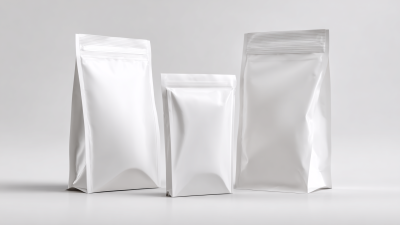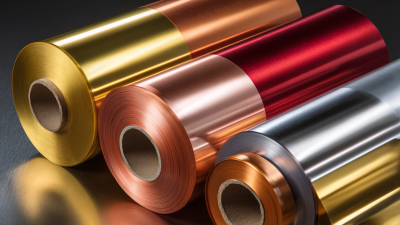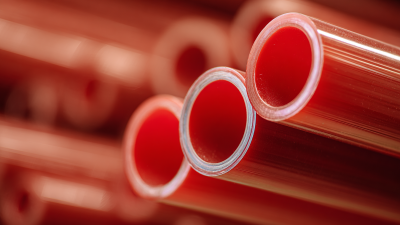Leave Your Message
In the ever-evolving beauty industry, cosmetic tubes have emerged as a critical packaging solution, combining functionality with aesthetic appeal. According to a recent market research report by Smithers Pira, the global cosmetic packaging market is projected to reach $40 billion by 2025, with cosmetic tubes playing a pivotal role in this growth due to their versatility and user-friendly design. These tubes, available in various materials such as plastic, aluminum, and laminated options, cater to an array of products, from creams and lotions to serums and gels.

Additionally, the trend towards sustainability has prompted brands to innovate, leading to the rise of eco-friendly tube options that appeal to a growing environmentally conscious consumer base. This blog will delve into the different types of cosmetic tubes and their applications, illustrating their significant impact on product marketing and consumer experience in the beauty sector.
In the beauty industry, cosmetic tubes play a pivotal role in packaging and protecting products like creams, lotions, and gels. These tubes are not just containers; they are specifically designed to ensure the integrity and usability of cosmetic formulations. Made from materials such as plastic or aluminum, they provide an effective barrier against environmental factors, ensuring the longevity and freshness of beauty products.
When selecting cosmetic tubes for your beauty line, consider the material's compatibility with your product. For instance, aluminum tubes are often preferred for products with sensitive ingredients that require extra protection from light and air exposure. Additionally, look for tubes that offer features like easy dispensing and customizable designs, as these can enhance user experience and brand image.
Tips for Choosing Cosmetic Tubes:
1. Prioritize functionality by selecting tubes that offer a variety of dispensing options, such as flip-top caps or squeeze tops.
2. Consider sustainability; opt for recyclable materials or eco-friendly options to appeal to environmentally-conscious consumers.
3. Don’t overlook aesthetics; invest in eye-catching designs and colors that reflect your brand identity and attract customers on the shelves.
 Cosmetic tubes have become a staple in the beauty industry, evolving from their original use for toothpaste to a versatile packaging option for a wide range of products. While there are various types of cosmetic tubes to choose from, two popular categories include squeeze tubes and airless options. Squeeze tubes are ideal for products like creams and gels, offering ease of use and controlled dispensing. Airless tubes, on the other hand, protect formulas from contamination and oxidation, making them perfect for sensitive skincare products.
Cosmetic tubes have become a staple in the beauty industry, evolving from their original use for toothpaste to a versatile packaging option for a wide range of products. While there are various types of cosmetic tubes to choose from, two popular categories include squeeze tubes and airless options. Squeeze tubes are ideal for products like creams and gels, offering ease of use and controlled dispensing. Airless tubes, on the other hand, protect formulas from contamination and oxidation, making them perfect for sensitive skincare products.
When selecting the right tube for your beauty product, consider these tips. First, evaluate the product's viscosity—thicker products may benefit from a squeeze tube with a wider opening, allowing for effortless dispensing. Second, think about user experience; tubes with precision nozzle tips enhance application for items like serums or targeted treatments. Lastly, prioritize sustainability—select tubes made from recyclable materials to meet consumer demands for eco-friendly packaging.
As brands continue to launch innovative beauty products, the packaging not only serves a practical purpose but also plays a significant role in attracting consumers. Staying informed about the latest trends in cosmetic tubes ensures that products stand out in a competitive market, giving brands that crucial edge.
In the beauty industry, the choice of material for cosmetic tubes plays a crucial role not only in product performance but also in sustainability. According to a recent report by Smithers Pira, the global market for packaging used in the cosmetic sector is predicted to reach $26.4 billion by 2024, with a significant portion attributed to sustainable packaging solutions. Cosmetic manufacturers are increasingly opting for eco-friendly materials such as biodegradable plastics and recycled content to meet consumer demands for sustainability. For instance, companies are now utilizing materials like sugarcane bioplastics, which can reduce carbon emissions by up to 80% compared to traditional petroleum-based plastics.
Moreover, the material used in cosmetic tubes impacts the overall user experience and product longevity. High-barrier materials can preserve product integrity by providing excellent protection against oxygen and light, enhancing shelf life. Research indicates that up to 70% of consumers consider packaging as a key factor in their purchasing decisions, emphasizing the need for both functional and aesthetically pleasing designs. As brands continue to innovate and integrate greener practices into their packaging strategies, understanding the interplay of materials, performance, and sustainability will be vital for staying competitive in this ever-evolving market.
| Tube Type | Material | Common Applications | Sustainability Features |
|---|---|---|---|
| Plastic Tubes | Polyethylene (PE), Polypropylene (PP) | Lotions, Creams, Gels | Recyclable, Lightweight |
| Aluminum Tubes | Aluminum | Ointments, Balms | 100% recyclable, Durable |
| Glass Tubes | Glass | Serums, High-end Products | Reusable, Recyclable |
| Biodegradable Tubes | Plant-based Materials | Natural Cosmetics | Compostable, Eco-friendly |
| Airless Tubes | Polymer Blends | Sensitive Formulations | Minimizes Waste, Often Recyclable |
Cosmetic tubes have become a staple in the beauty industry, primarily due to their versatility and convenience. In skincare, these tubes are often used for serums, creams, and lotions, allowing for easy dispensing and precise application. The ability to control the amount dispensed helps minimize product waste, making them a preferred choice among consumers and brands alike. Additionally, many tubes are designed with ergonomic features to enhance user experience, further driving their popularity.
In the makeup sector, cosmetic tubes serve a similar purpose but often feature specialized designs to accommodate various formulations, such as liquid foundations and lip glosses. These packaging solutions not only ensure that products remain hygienic and uncontaminated but also allow brands to convey their identity through creative graphics and materials. Furthermore, the growing emphasis on sustainability within the beauty industry has led to an increase in eco-friendly tube options, catering to consumers who prioritize environmentally conscious products. The rise of innovative materials in tube production reflects a broader trend toward sustainable packaging solutions, reshaping how beauty products are packaged and perceived by consumers.
When selecting the right cosmetic tube for your beauty brand, it’s essential to consider several factors that will influence both functionality and consumer appeal. First, assess the product type and its viscosity. For liquid formulations like serums and lotions, thinner tubes with a fine tip or pump might be ideal for precision application. Conversely, thicker creams or pastes may require a sturdier tube with a wider opening to accommodate the product's texture.
Another critical aspect is the material of the tube itself. Options like plastic, aluminum, and glass each come with distinct benefits. Plastic tubes are lightweight and flexible, offering convenience for consumers. Aluminum tubes, while providing an upscale look, are also recyclable, making them a sustainable choice. Aesthetic considerations are equally important; choose colors and designs that resonate with your brand identity and target market. Ultimately, aligning your tube choice with your brand’s values and the product’s requirements will enhance user experience and foster brand loyalty.







